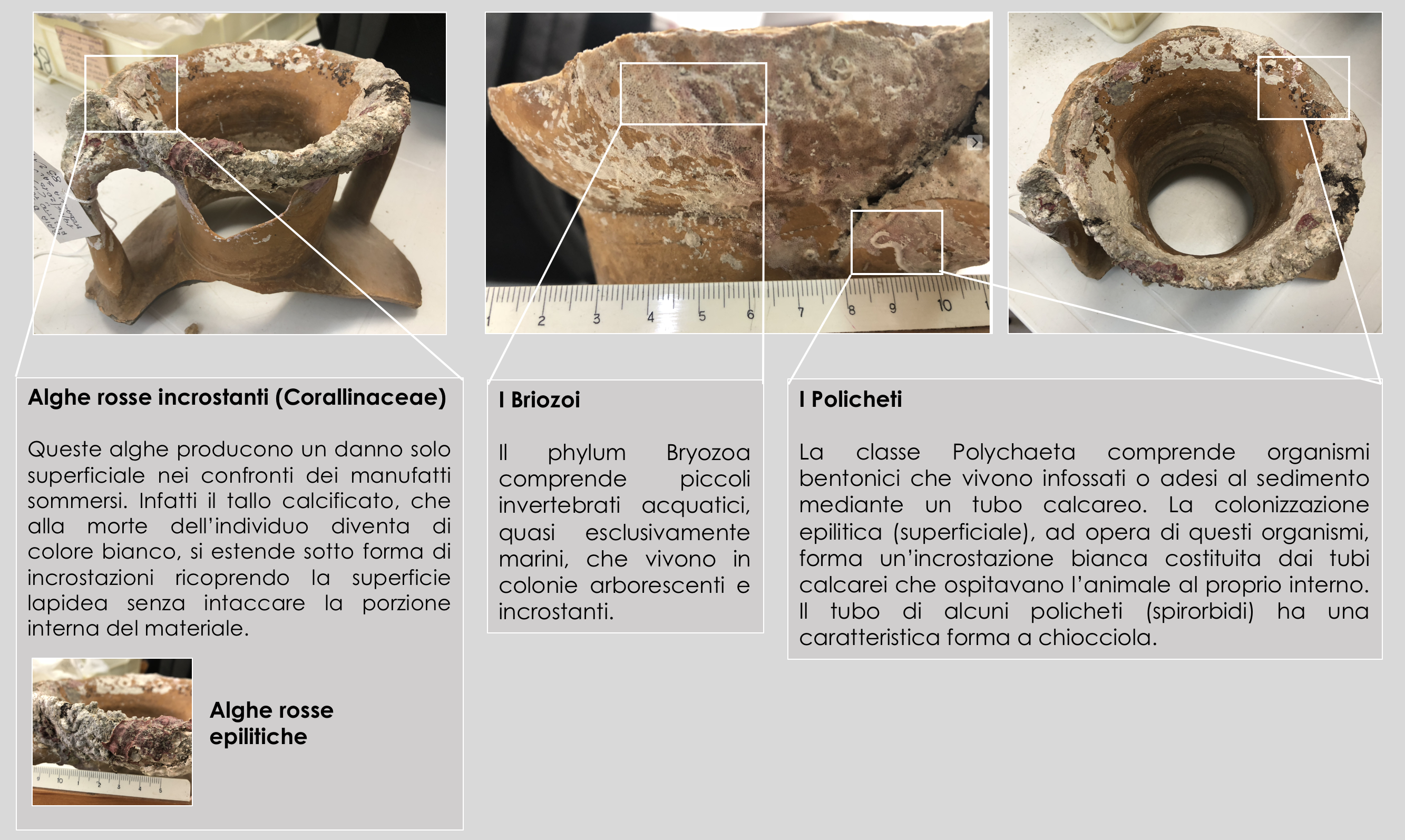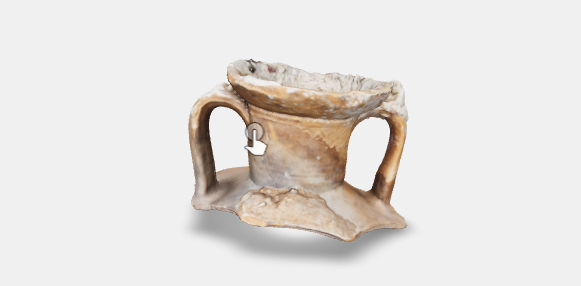Amphora neck, broken at the height of the shoulders.
The fragment of the amphora presents – on the external and internal surfaces (especially inside the neck) – a mixed colonisation with a predominant presence of sedentary Polychaeta, encrusting red algae thalli and Bryozoans. There are still visible traces of epilithic, not encrusting red algae thalli.

MEDAGLIA 2008, pp. 102-103; MEDAGLIA 2010, p. 296
Medaglia S. 2008, Per un censimento dei relitti antichi lungo la costa crotonese. Nota preliminare, in Ricerche archeologiche e storiche in Calabria: modelli e prospettive, “Atti del convegno di studi in onore di Giovanni Azzimmaturo (Cosenza 2007)”, Cosenza, pp. 93-120.
Medaglia S. 2010, Carta archeologica della provincia di Crotone: paesaggi storici e insediamenti nella Calabria centro-orientale dalla Preistoria all’Altomedioevo, Ricerche IV. Collana del Dipartimento di Archeologia e Storia delle Arti, Università della Calabria, Rossano.
Sacchetti F. 2012, Les amphores grecques dans le Nord de l’Italie. Échanges commerciaux entre les Appennins et les Alpes aux époques archaïque et classique (Bibliothèque d’Archéologie Méditerranéenne et Africaine 10), Aix-en Provence.
Sourisseau J. CH. 2011, La diffusion des vins grecs d’Occident du VIIIe au IVe s. av. J.-C., sources écrites et documents archéologiques, in La vigna di Dioniso: vite, vino e culti in Magna Grecia, Atti del 49 Convegno di Studi sulla Magna Grecia (Taranto 2009), Taranto, pp. 176 (fig. 6), 189-190.
Vandermersch, C. 1994. Vins et amphores de Grande Grèce et de Sicile, IV-III s. avant J.C. Etudes I. Napoli: Publications du Centre Jean Bérard.
Vandermersch 1994, pp. 62-67; SOURISSEAU 2011, pp. 176 (fig. 6), 193 ss; SACCHETTI F. 2012, pp. 32-38.



